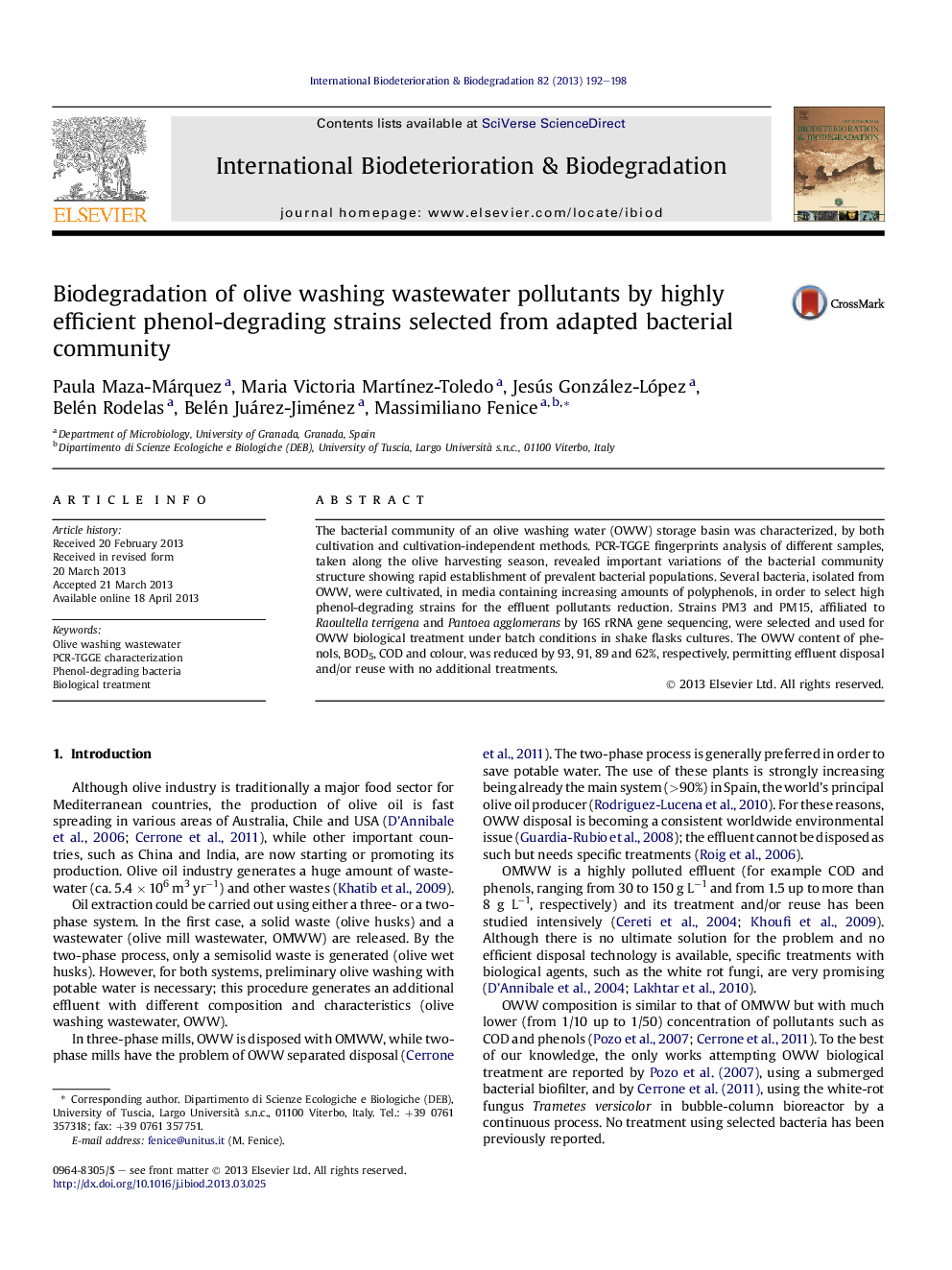| کد مقاله | کد نشریه | سال انتشار | مقاله انگلیسی | نسخه تمام متن |
|---|---|---|---|---|
| 4364984 | 1616333 | 2013 | 7 صفحه PDF | دانلود رایگان |

• Olive mill washing water (OWW) microbial community was TGGE-analysed.
• Phenol degrading Raoultella terrigena & Pantoea agglomerans were isolated from OWW.
• The strains were able to strongly reduce all OWW pollutants.
• Treated OWW complied with legislation for reuse in ferti-irrigations or disposal.
• This is the first very efficient process for OWW depollution described.
The bacterial community of an olive washing water (OWW) storage basin was characterized, by both cultivation and cultivation-independent methods. PCR-TGGE fingerprints analysis of different samples, taken along the olive harvesting season, revealed important variations of the bacterial community structure showing rapid establishment of prevalent bacterial populations. Several bacteria, isolated from OWW, were cultivated, in media containing increasing amounts of polyphenols, in order to select high phenol-degrading strains for the effluent pollutants reduction. Strains PM3 and PM15, affiliated to Raoultella terrigena and Pantoea agglomerans by 16S rRNA gene sequencing, were selected and used for OWW biological treatment under batch conditions in shake flasks cultures. The OWW content of phenols, BOD5, COD and colour, was reduced by 93, 91, 89 and 62%, respectively, permitting effluent disposal and/or reuse with no additional treatments.
Journal: International Biodeterioration & Biodegradation - Volume 82, August 2013, Pages 192–198